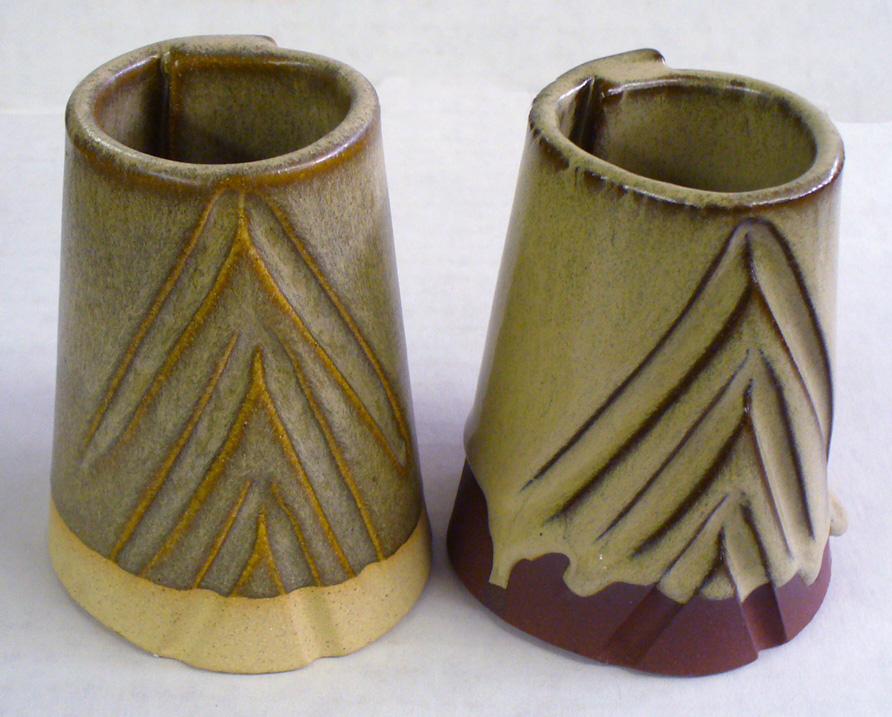How much rutile can a glaze take before it becomes unstable?
The 80:20 base GA6-A insight-live.com/material/32">Alberta slip base becomes oatmeal when over saturated with rutile or titanium (left: 6% rutile, 3% titanium; right: 4% rutile, 2% titanium). That oatmeal effect is actually the excess titanium crystallizing out of solution into the melt as the kiln cools. Although the visual effects can be interesting, the micro-crystalline surface is unpleasant to touch and susceptible to cutlery marking and leaching (not as stable or durable as in glazes which are pure amorphous glass). For functional ware, rutile glazes are among the most troublesome to keep consistent, one way of avoiding problems is keeping the percentage as low as possible while still getting the desired variegation (of course that will vary depending on the melt fluidity of the glaze, more highly fluid ones can handle more rutile or titanium).
Pages that reference this post in the Digitalfire Reference Library:
Ceramic Rutile, GA6-F - Alberta Slip Cone 6 Oatmeal, Opalescent glazes, what are they, Leaching, Crystallization, Food Safe, Rutile Blue Glazes

This post is one of thousands found in the Digitalfire Reference Database. Most are part of a timeline maintained by Tony Hansen. You can search that timeline on the home page of digitalfire.com.
